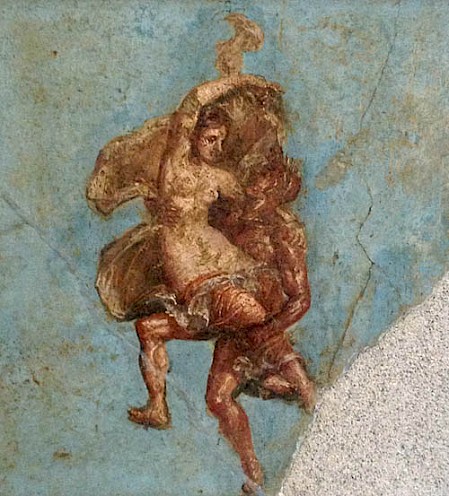Piecing together the history of Greek art
If you follow a course on ancient Greek art history, you’ll probably be told that figurative art all but disappeared entirely in Greece in the course of the eleventh century BC, only for it to re-emerge, relatively suddenly, on painted pots of the eighth century BC. However, one of the problems in studying the ancient world is that most of it has been lost.
Depictions of people, animals, and plants indeed disappear in Greece, by and large (there are exceptions – as always), toward the end of the eleventh century BC, but only on objects that can be traced archaeologically, most notably pottery. However, it’s not impossible that figurative art continued to be important in media that have left almost no trace in the archaeological record. For example, we know from written sources that cloth was important in Antiquity, but (almost) no ancient textiles have survived to the present day. In the Odyssey, for instance, Penelope weaves a shroud for Odysseus that depicts the Trojan War; the description recalls the famous Tapisserie de Bayeux.
Did the ancient Greeks really weave such intricate scenes, or is Penelope’s shroud something that Homer invented – pardon the pun – out of whole cloth? We may never know for sure. But it does serve as a warning to be careful when making sweeping statements on the basis of incomplete evidence.
We know, for example, that the ancient Greeks also had a vibrant tradition when it comes to large-scale paintings. At the excavations of the temple at Kalapodi, archaeologists discovered fragments of a wall-painting dated to the later seventh century that depicts helmeted men marching in a line similar to the battle-scene on the Chigi Vase; a rare example of early Greek wall-painting.
But most evidence for Greek painting other than on pots has been preserved only in texts. Through texts, we know that Classical Athens, for example, had a stoa poikile, or ‘Painted Stoa’. There was a painting depicting a battle against the Amazons, as well as a painting commemorating the Athenian victory over the Persians at Marathon (490 BC). We even know the names of some of the painters who decorated the stoa. But their work has been lost to us.
This is one of the reasons why towns like Pompeii and Herculanaeum, which were buried by an eruption of the Vesuvius in AD 79, are so important. The famous Alexander mosaic, for example, is thought to have been a copy of a Greek painting of the third century BC. Since the Romans were so heavily influenced by the Greeks and, in a way, continued Hellenistic traditions as far as art is concerned, we often assume that early Roman frescoes give an idea of what Greek work might have been like. Just take a look at this fresco from Pompeii depicting a very Greek subject: a satyr abducting a Maenad (a nymph and follower of Dionysus):

Our knowledge of Greek art is imperfect. We know that early cult statues, at least, were sometimes made of wood (as described by Pausanias and others), but none of these xoana have survived. Likewise, Greek sculptors of the Classical and Hellenistic periods often preferred to make statues out of bronze. But bronze was often melted down and re-used, and many of these originals have been lost. Fortunately, wealthy Romans had a taste for Greek art and many bronze originals were copied in marble. As a result, a lot of our knowledge of Greek statuary derives from Roman copies.
When studying the ancient world, you often have to make due with scraps.

